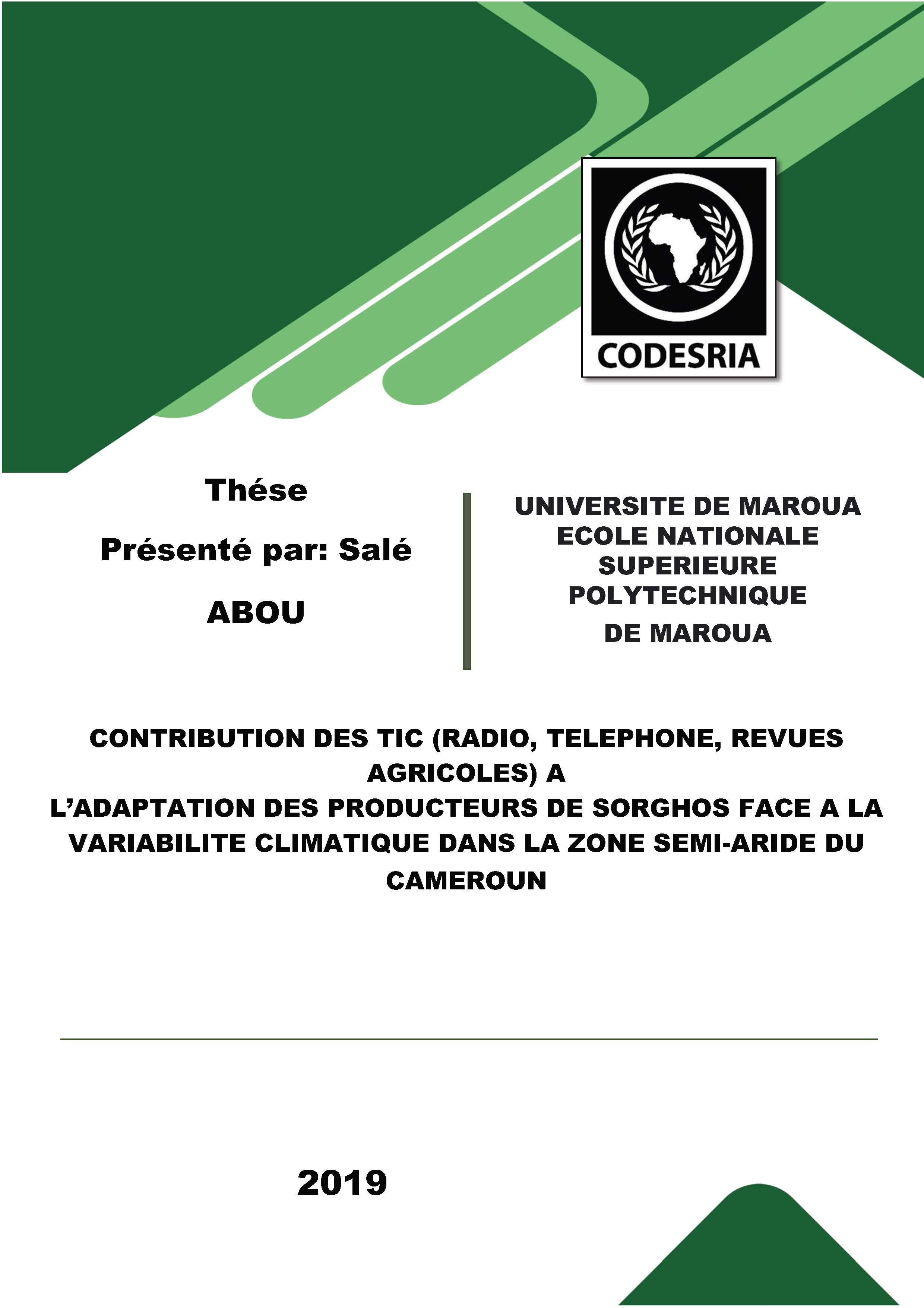CONTRIBUTION DES TIC (RADIO, TELEPHONE, REVUES AGRICOLES) A L’ADAPTATION DES PRODUCTEURS DE SORGHOS FACE A LA VARIABILITE CLIMATIQUE DANS LA ZONE SEMI-ARIDE DU CAMEROUN
Keywords:
technologie de l'information, technologie des communications, radio, périodiques, agriculteurs, CamerounSynopsis
This work analyzes the possibilities offered by the use of ICTs to overcome the various
shortcomings of interpersonal communication channels, particularly the low access to
innovations and the low adoption of these innovations by farmers in the semi-arid region of
Cameroon. The overall objective of this work is therefore to evaluate the contribution of ICTs
(radio, telephone, agricultural magazines) to the adaptation of sorghum farmers to climate
variability in the Diamaré division. In all six hundred (600) household heads from twenty
villages were selected using the stratified random sampling method, and surveyed. The
collected data were analyzed using R and SPSS statistical software tools. It appears that
sorghum farmers of Diamaré division perceive the climate variability; they do not really adapt
to the climate variability; interpersonal communication channels and radio are the most used
channels, while the telephone is the ICT that contributes the most to climate variability
perception and diffusion of agricultural innovations, and the agricultural magazines the ICT
that contributes the most to innovations’ adoption; that means telephone is the ICT on which
agricultural extension must henceforth rely most; and sorghum farmers' access to ICTs
improves their resilience to climate variability, as it influences both their climate variability
perception, and the diffusion and adoption of their adaptation strategies; in order to improve
these sorghum farmers resilience, the rural development policies must be based on three
pillars, the first of which is the regular dissemination of agro-meteorological information; the
second is agricultural research and extension which uses the various communication channels
(ICTs, interpersonal channels) to regularly disseminate agricultural innovations through
innovation systems, and pluralistic and demand-driven extension ; and the third consists of
political and institutional measures that prioritize the diffusion of agricultural innovations
through ICTs, and the improvement of the sorghum farmers socio-economic and
infrastructural conditions (roads, health, schooling, electricity).
Downloads






